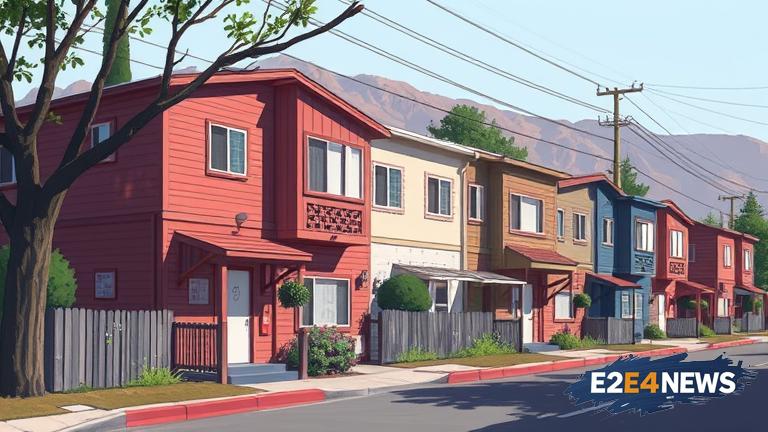A contentious debate is unfolding in a California neighborhood, where a proposed 136-unit Accessory Dwelling Unit (ADU) project has sparked intense opposition from local residents. The project, which would involve the construction of multiple ADUs on a single parcel of land, has been met with fierce resistance from neighbors who argue that it would exacerbate existing traffic and parking problems in the area. Furthermore, opponents of the project claim that it would place an undue strain on local resources, including schools, emergency services, and infrastructure. The group of neighbors, who have banded together to form a coalition, have filed a lawsuit against the project’s developer, seeking to block its construction. At the heart of the dispute is the issue of density, with opponents arguing that the project would fundamentally alter the character of the neighborhood. Proponents of the project, on the other hand, argue that it would provide much-needed housing in an area where affordability is a major concern. The project’s developer has emphasized that the ADUs would be designed to be compact and efficient, with a focus on sustainability and energy efficiency. However, opponents counter that the project’s sheer scale would overwhelm the existing infrastructure, leading to increased congestion and decreased quality of life for residents. The lawsuit, which was filed in a California court, alleges that the project’s developer failed to adequately assess the potential impacts of the project on the surrounding neighborhood. The plaintiffs are seeking a court order to halt construction of the project, pending a more thorough review of its potential effects. As the legal battle unfolds, the community remains deeply divided, with some residents expressing support for the project as a means of addressing the region’s housing crisis. Others, however, remain steadfast in their opposition, citing concerns over the project’s potential to disrupt the neighborhood’s delicate balance. The controversy has sparked a broader debate over the role of ADUs in addressing housing affordability, with some arguing that they offer a vital solution to the region’s housing woes. Others, however, contend that ADUs are being used as a means of circumventing traditional zoning regulations, leading to unchecked development and strain on local resources. As the case makes its way through the courts, the community will be watching with bated breath, eager to see how the issue is ultimately resolved. The outcome of the lawsuit is likely to have significant implications for the future of ADU development in the region, and could potentially set a precedent for similar projects elsewhere. In the meantime, the debate over the project serves as a microcosm for the larger issues surrounding housing affordability, density, and community character. The project’s developer has emphasized that the ADUs would be designed to be affordable, with a focus on providing housing options for low- and moderate-income residents. However, opponents argue that the project’s affordability claims are overstated, and that the true beneficiaries would be investors and developers. The controversy has also raised questions over the role of local government in regulating ADU development, with some arguing that existing regulations are inadequate to address the potential impacts of large-scale ADU projects. As the community continues to grapple with the issue, it remains to be seen how the project will ultimately be resolved. The lawsuit is currently pending in court, with a decision expected in the coming months. In the meantime, the debate over the project serves as a reminder of the complex and often contentious nature of housing development, where competing interests and priorities must be carefully balanced. The project’s fate will likely have significant implications for the future of housing development in the region, and could potentially serve as a model for other communities grappling with similar issues. The community’s response to the project has been shaped by a range of factors, including concerns over traffic, parking, and strain on local resources. However, the debate over the project also reflects deeper concerns over the character and identity of the neighborhood, and the potential impacts of large-scale development on community cohesion and quality of life. As the issue continues to unfold, it is likely that the community will remain deeply engaged, with residents on both sides of the debate eager to see how the project is ultimately resolved.





